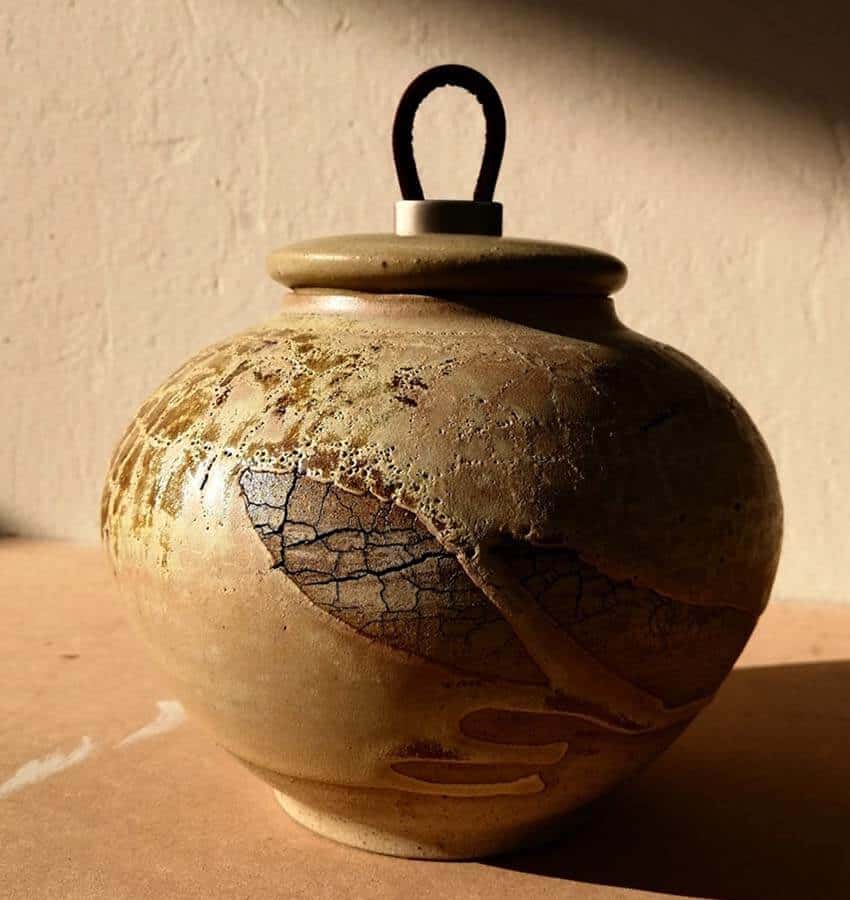I had the fortune of meeting Iván Pugga González on a trip to Aguascalientes in 2018. At the time, my focus was finishing up loose ends on my book, Mexican Cartonería, but his work was highly recommended, and I decided to check it out. What I saw was the beginning of a revival of ceramic production in the state.
Aguascalientes straddles north and central Mexico geographically and culturally. It is not known for pottery, but it does have an important history here.
The Spanish brought glazed ceramic techniques and designs here as they did to Mesoamerica to the south. There are definite similarities between the traditional work of Aguascalientes and the better-known majolica traditions to the south and east, but it is somewhat simpler, with fewer of the later influences seen in areas such as Puebla and Guanajuato.
Like these, Aguascalientes majolica favors color combinations such as blue, cherry red, orange, brown, black, yellow and green, but the background color tends to be more yellowish because of local minerals.

Aguascalientes ceramics reached its peak in the early 19th century, both in terms of quantity and quality of production. Tiles on older buildings in the state capital bear witness to the industry, and the state was a major producer of utilitarian dishes in Mexico.
With Mexico’s industrial revolution, ceramics production managed to keep up to some extent. Large workshops such as Casa Terán and San Carlos became semi-industrialized by the 20th century, but eventually, Aguascalientes pottery went into decline. By the 1970s, the last of the workshops had closed, seemingly for good.
It would be 50 years before Pugga would take up the challenge of researching and reviving the craft. He is an artist by training, and he currently teaches art at the Cultural Institute of Aguascalientes.
After learning basic ceramic work in 2010, the state’s tiles and dishes inspired him to research and experiment. He scoured libraries for texts as far as Mexico City and Guadalajara and sought out the few still-living craftsmen from the old industry. In his workshop, he worked out with his hands what the books and his trained eye told him.

He has managed to recreate authentic processes, using authentic materials in molding, glazing, decoration and firing, with one exception. The glazes are modern both because of economics and to make the wares lead-free.
When I first saw Pugga and his work, his progress had been sufficient to create traditional wares, plus some new designs based on motifs from Aguascalientes culture. There were even some purely artistic pieces. Sales had already begun through word of mouth, mostly to foreign tourists through the state’s Casa de Artesanias and to restaurants, hotels and galleries.
Five years later, I saw Pugga and his work again at an event sponsored by the Culture Ministry. His work was good before, but the strides he had made were impressive.
His traditional designs have become more refined, and there is now some play in them. Some of his more innovative wares have natural curves and an almost Japanese look to them. Perhaps some of the most impressive work are the tiny tiles, with even tinier painted details that grace the necklaces, earrings and more of his jewelry collection.

All his pieces/sets are unique, signed and numbered by the artist.
He was in Mexico City because of the quality of this work and the fact that he has become the ceramicist of Aguascalientes. He is the only true producer still, working along with some help from family.
His training as an artist influences his craft, and now his craft influences his art. He believes that the two are strongly interconnected as both require the full dedication of the creator. As satisfying as the craft element of his work is, his favorite works are still artistic.
These can be artistic variations on utilitarian items, such as pots, decorative items or sculptures. They often reflect his experiences with nature.
The traditional craft work remains an important part of his business as appreciation for what was lost continues to grow.
In 2019, the city of Aguascalientes commissioned him to create majolica plaques for a program called Finca Patrimonio, which highlights historic buildings and places to commemorate the 10th anniversary of Royal Inland Road (aka Silver Route) as a UNESCO World Heritage Site.
These plaques can be found in the city at locations such as the Municipal Palace, the Hotel París and the La Saturnina restaurant.
By the end of the 2010s, Pugga and his work began receiving local and state media coverage. He has received recognition from local, state and federal cultural institutions, receiving awards and grants for restoration projects. His is a story of what can be possible with time and determination.
Leigh Thelmadatter arrived in Mexico 18 years ago and fell in love with the land and the culture in particular its handcrafts and art. She is the author of Mexican Cartonería: Paper, Paste and Fiesta (Schiffer 2019). Her culture column appears regularly on Mexico News Daily.
